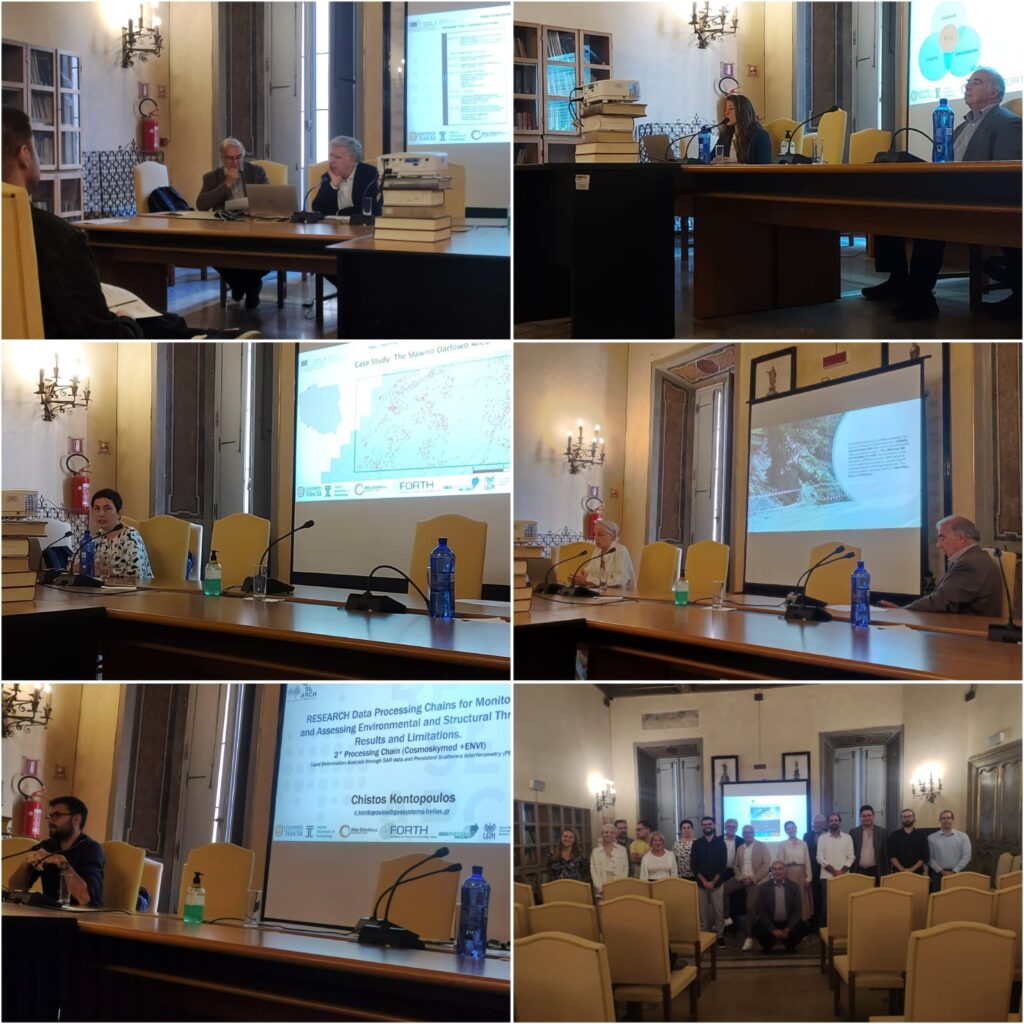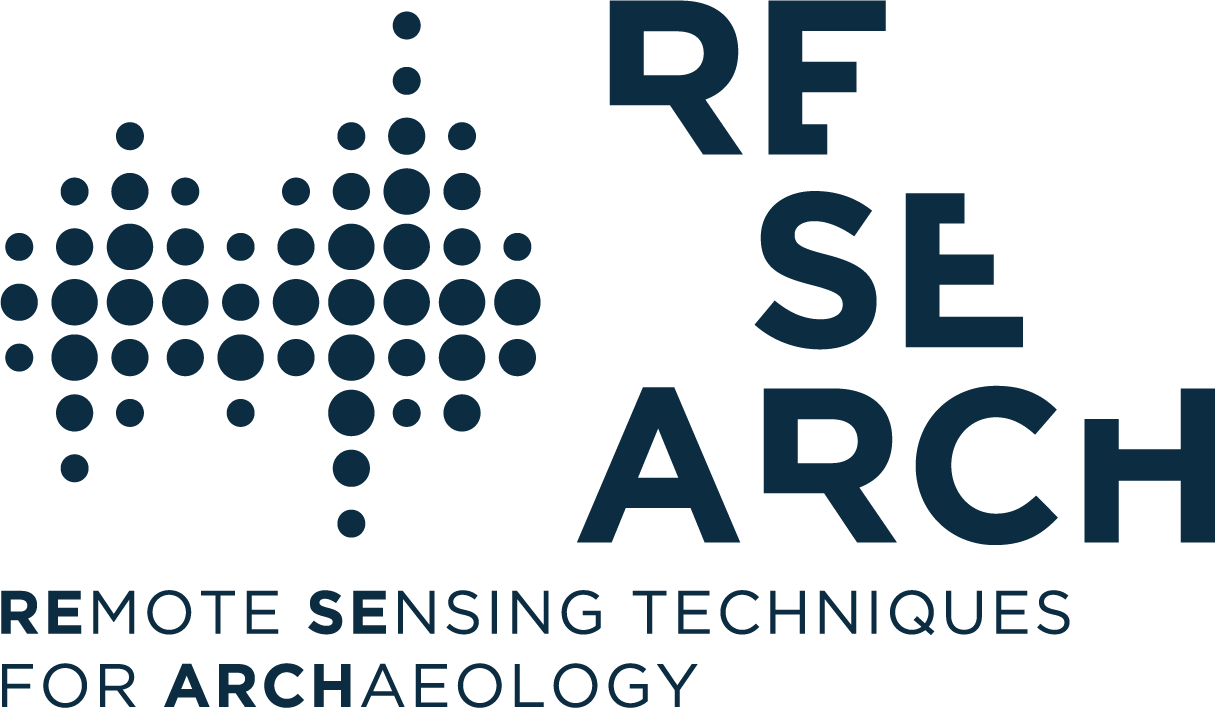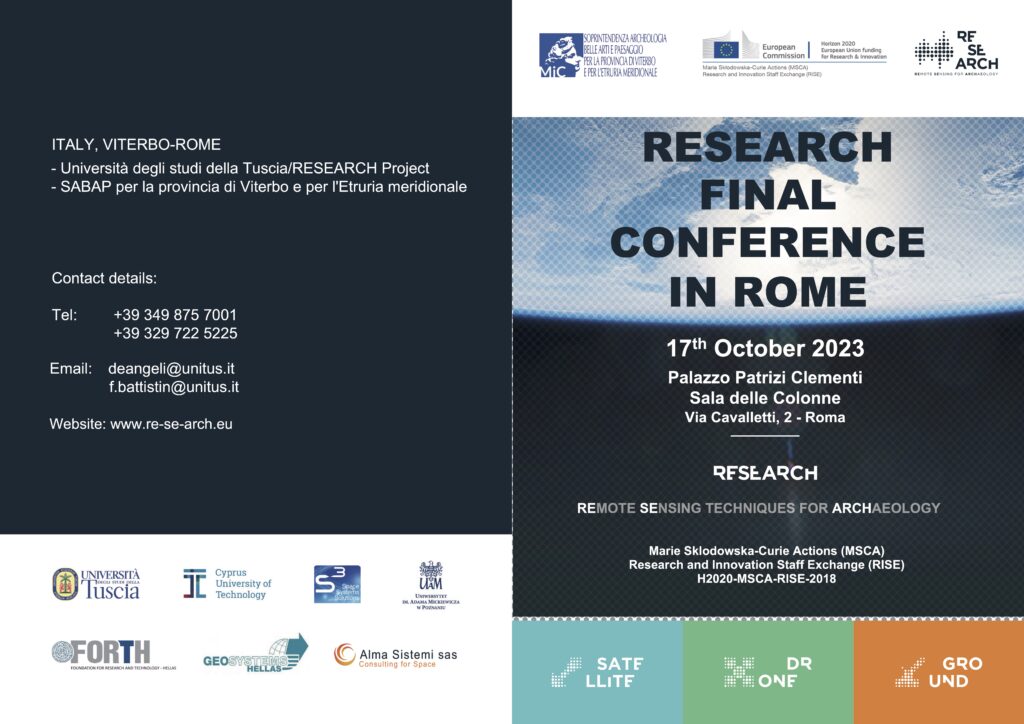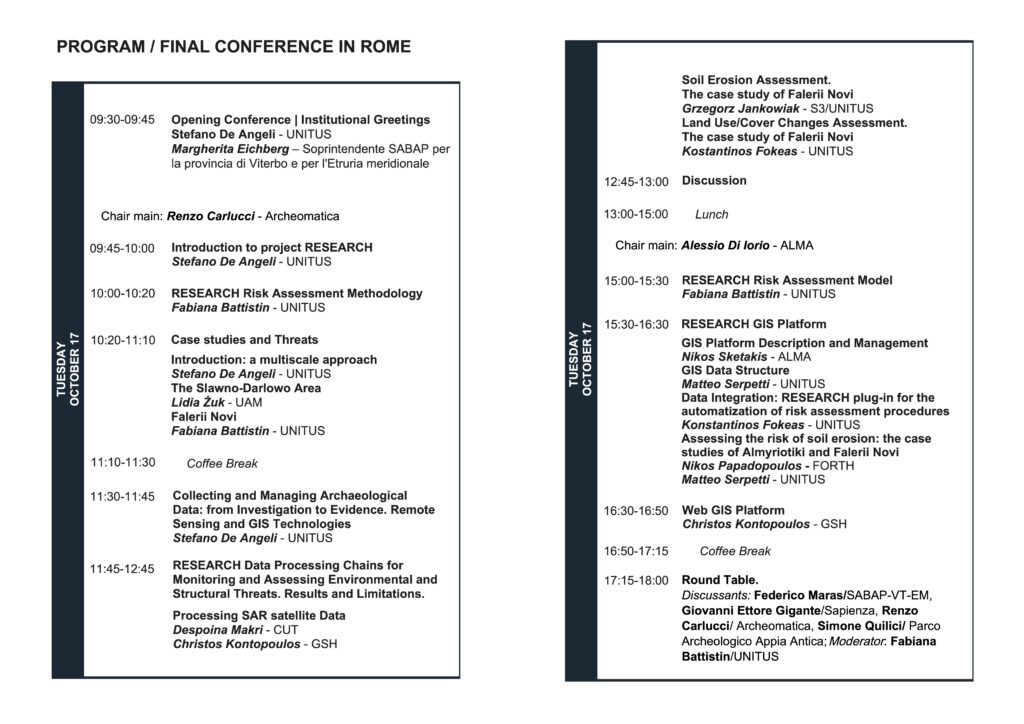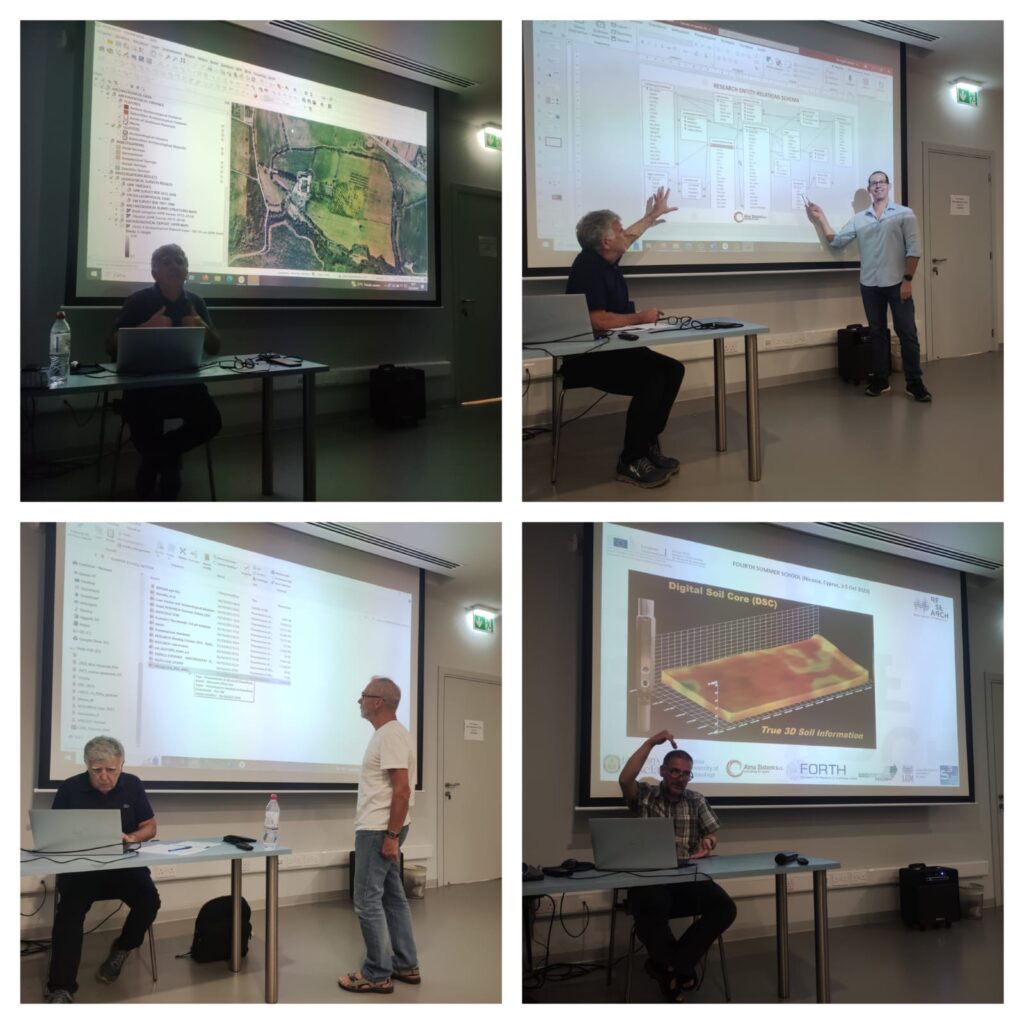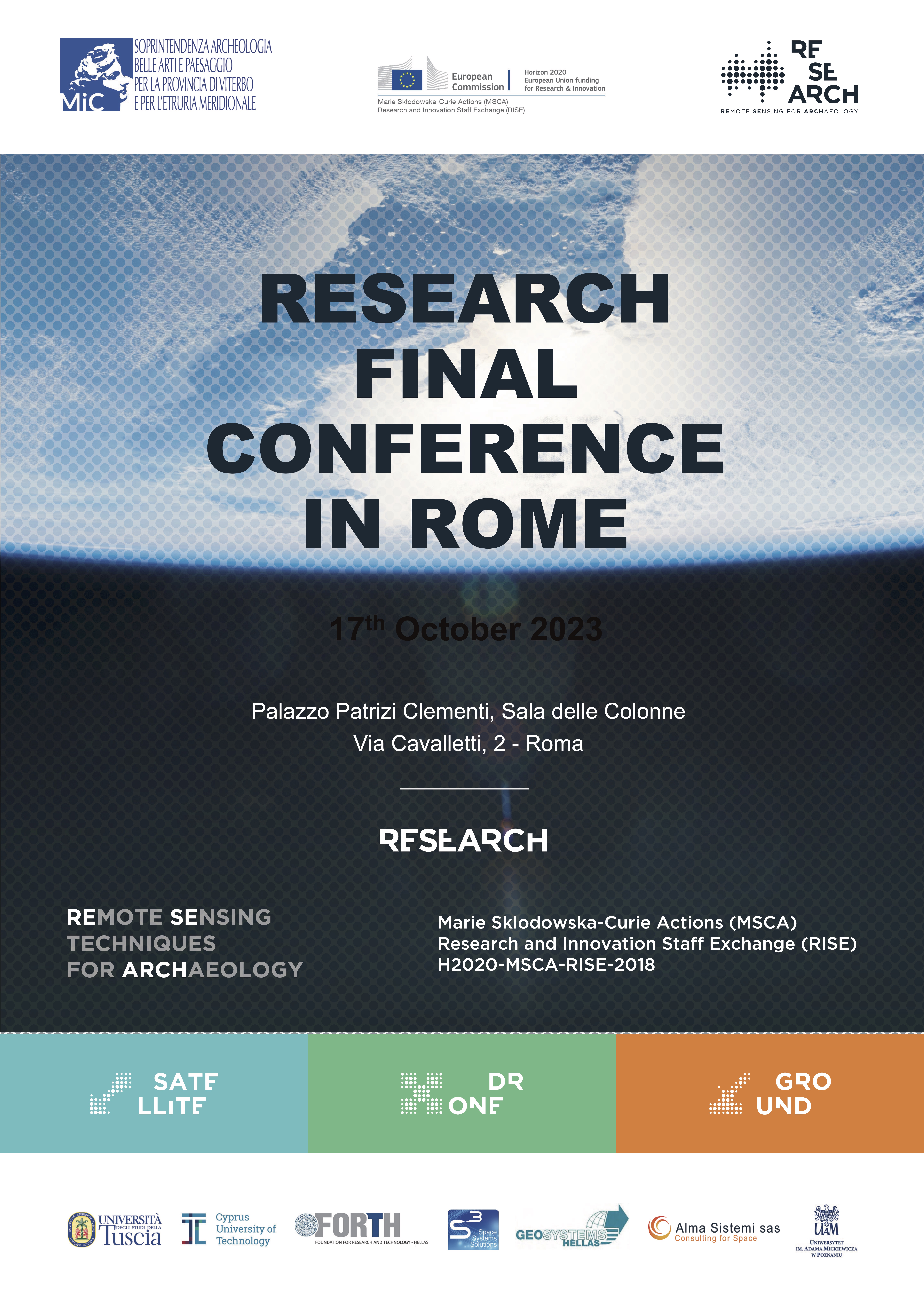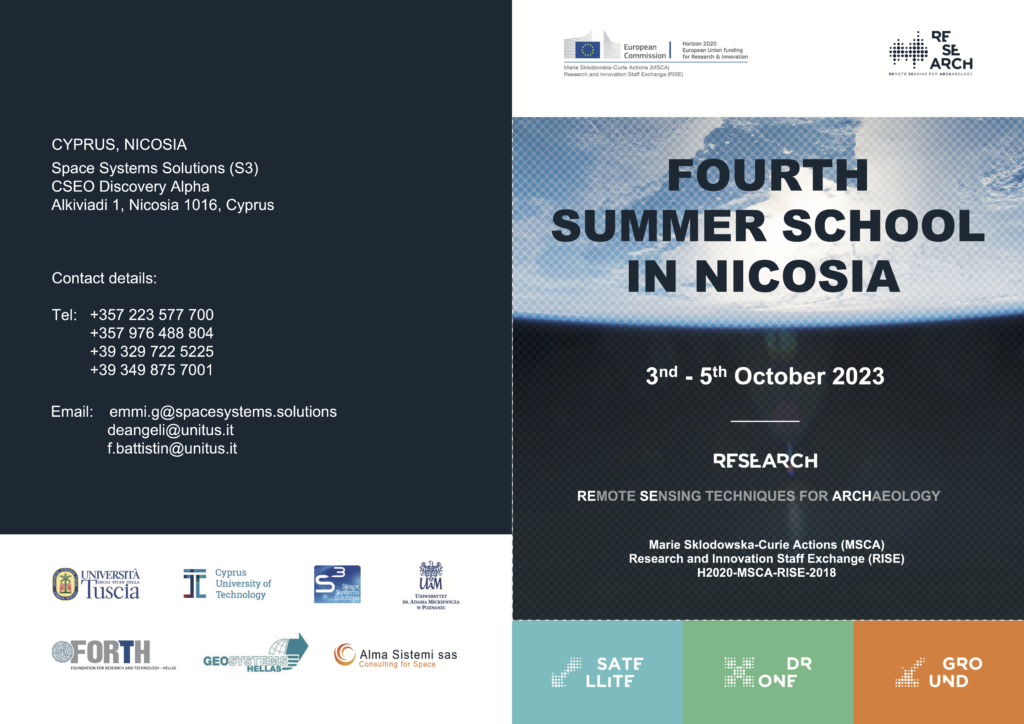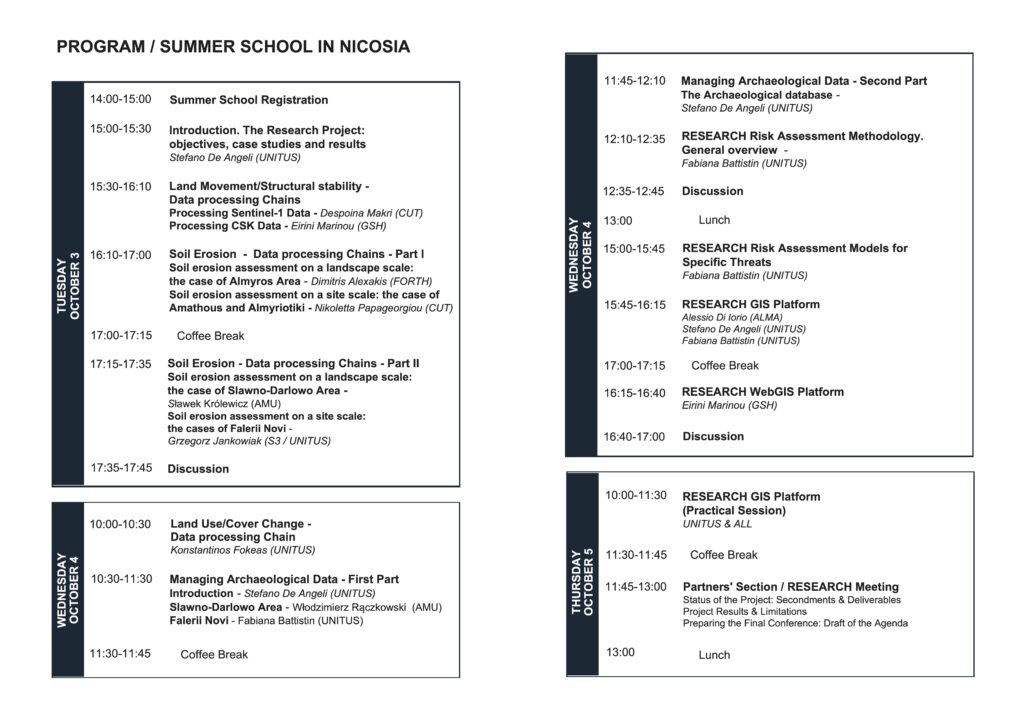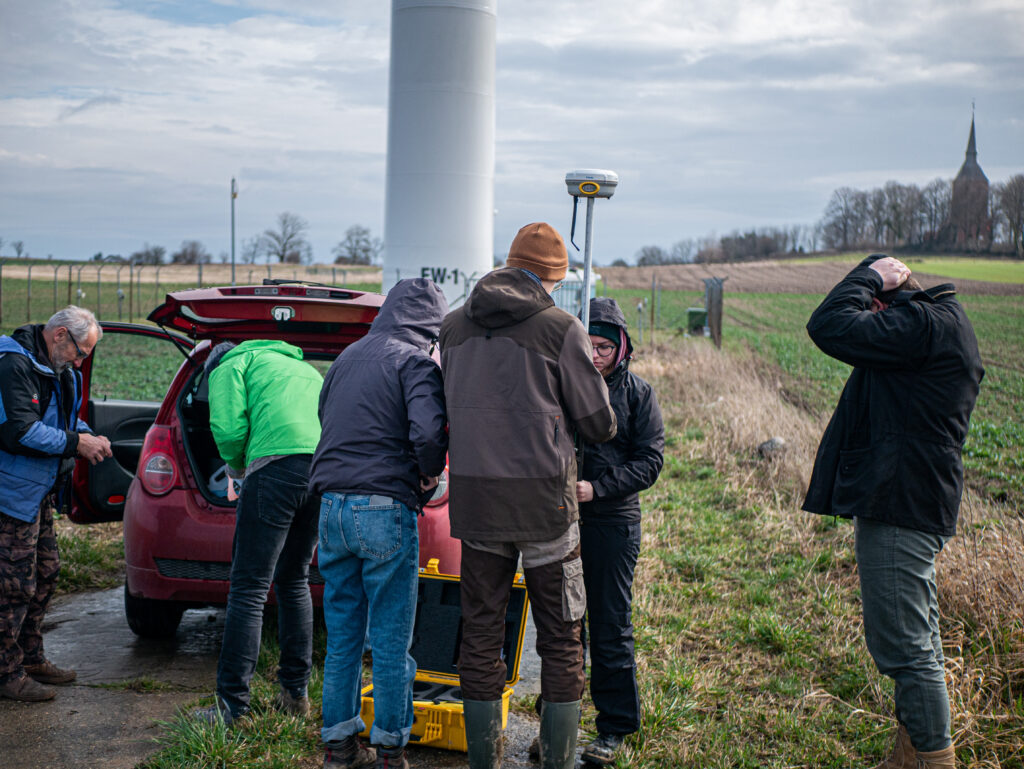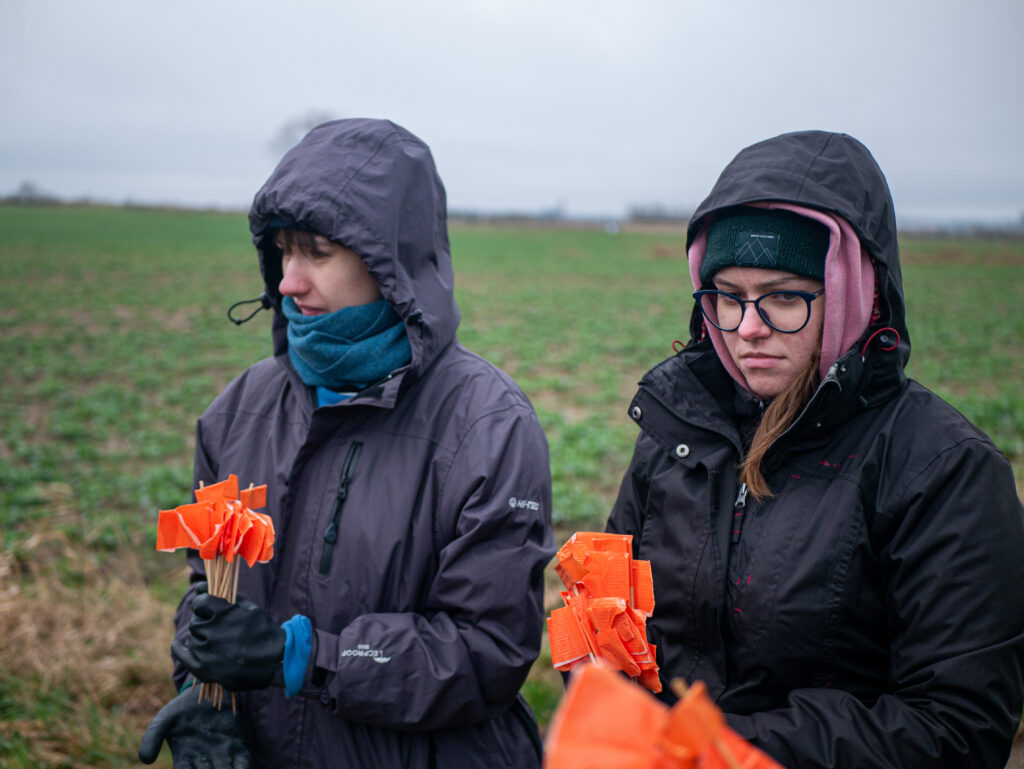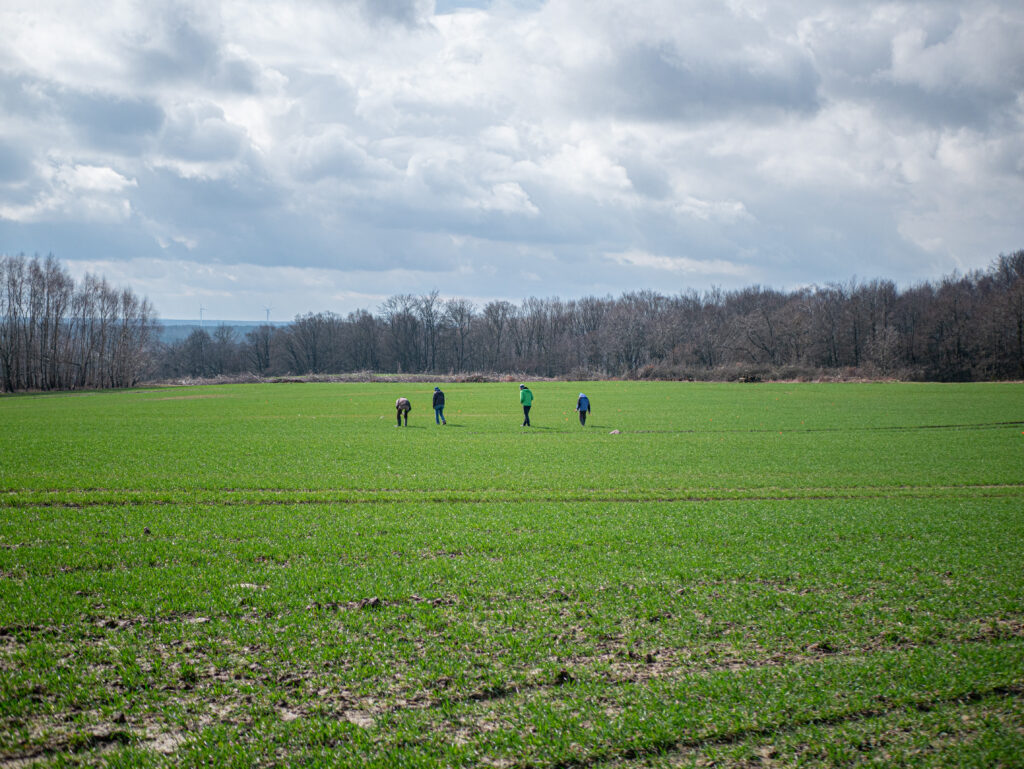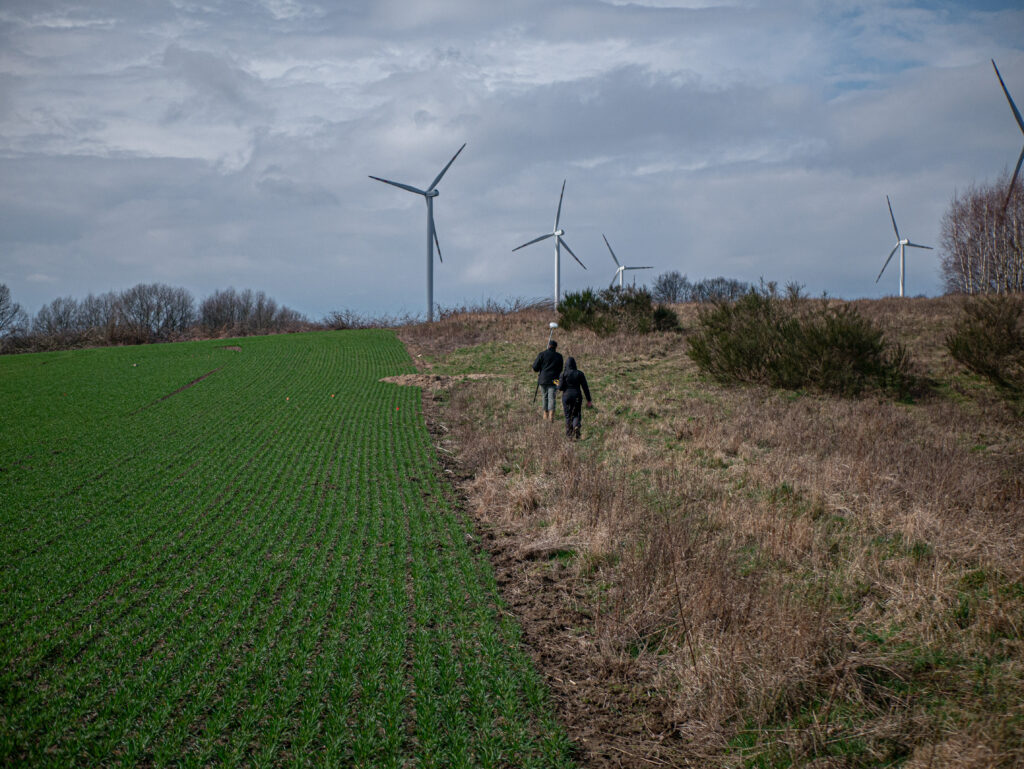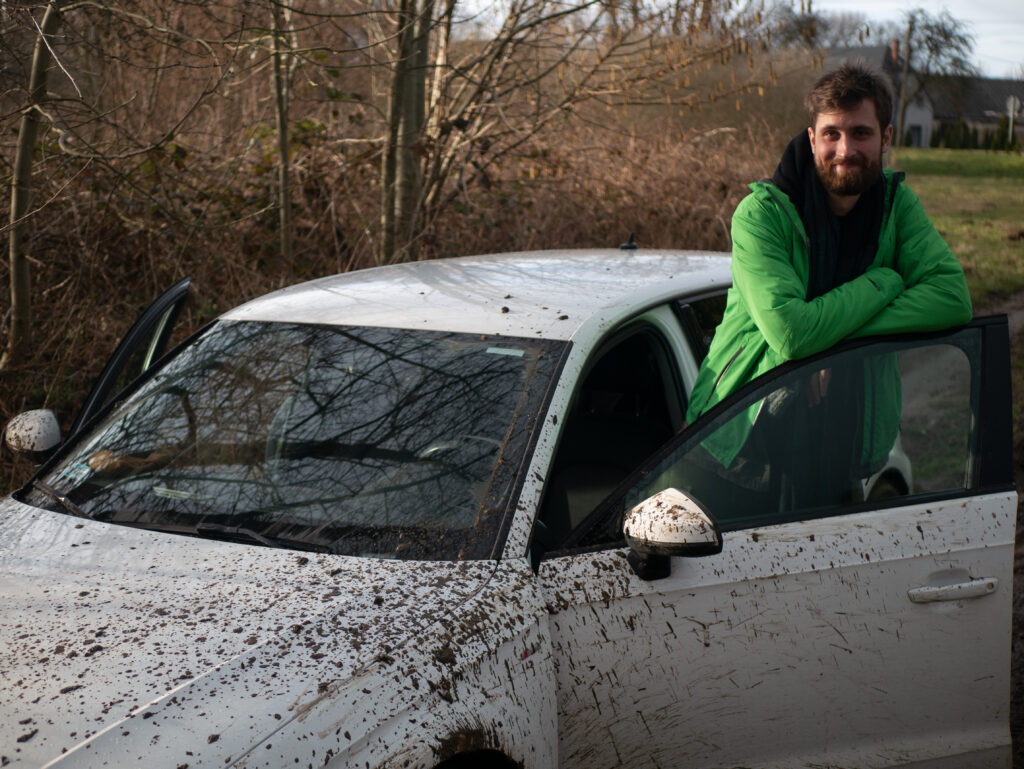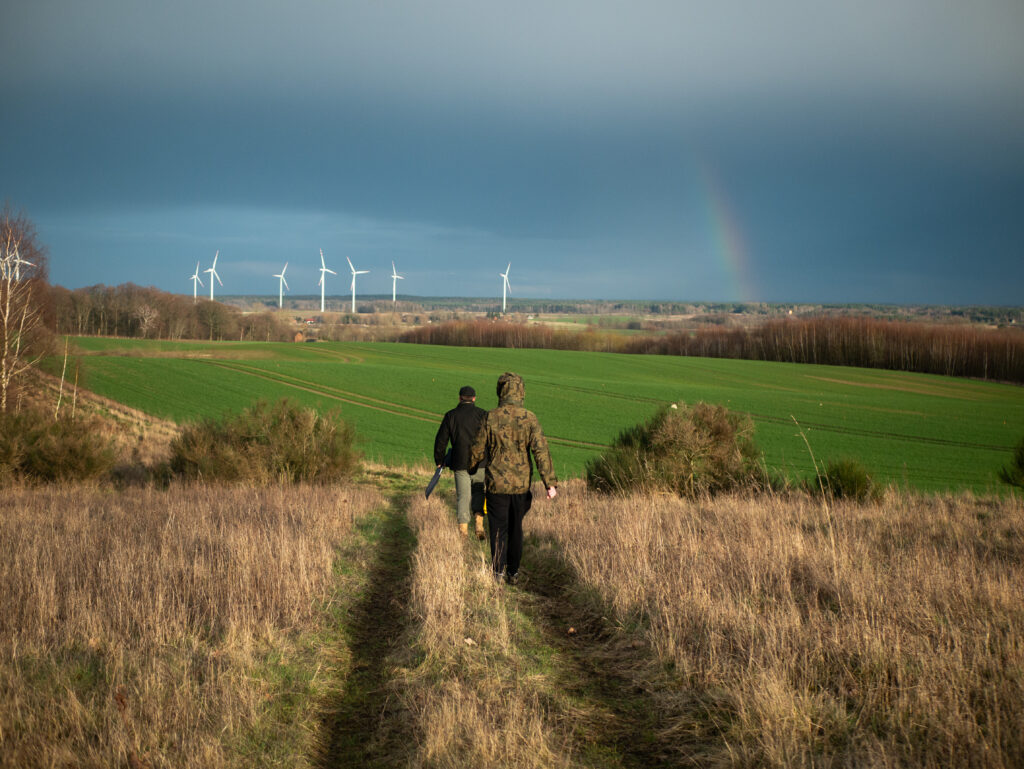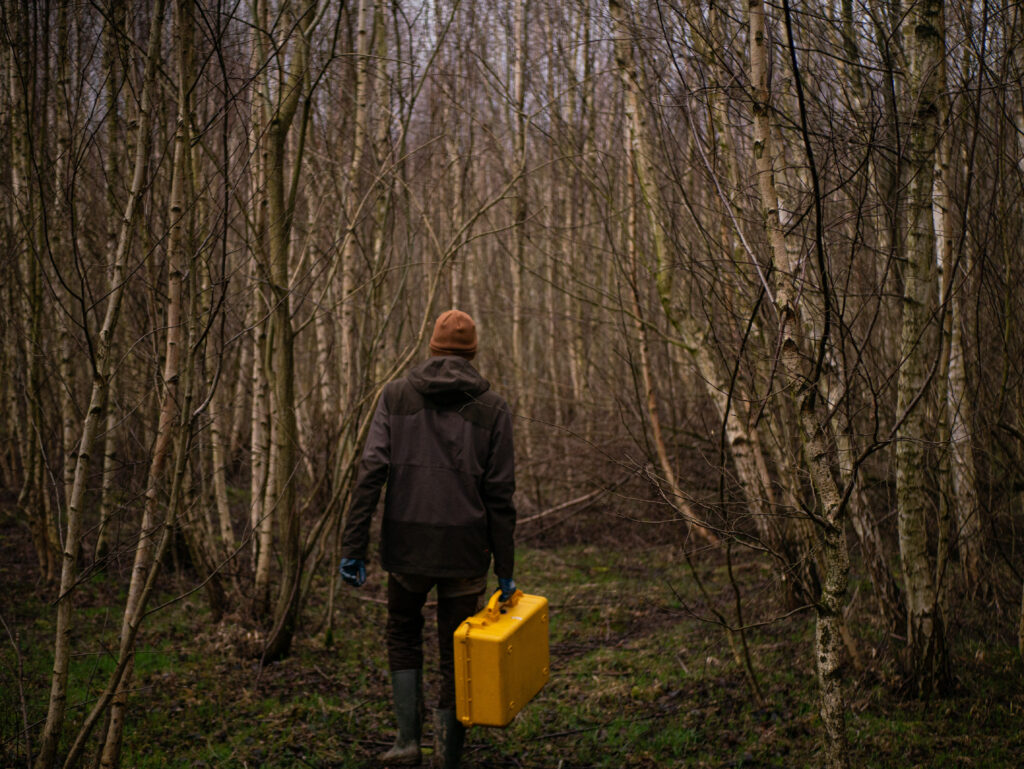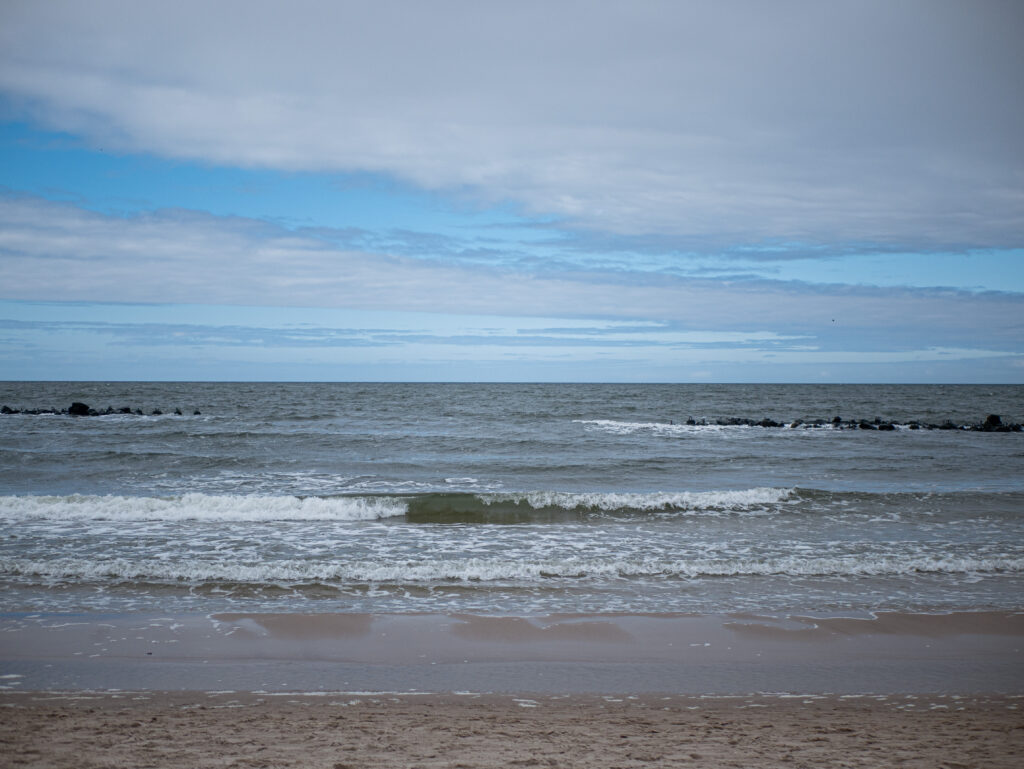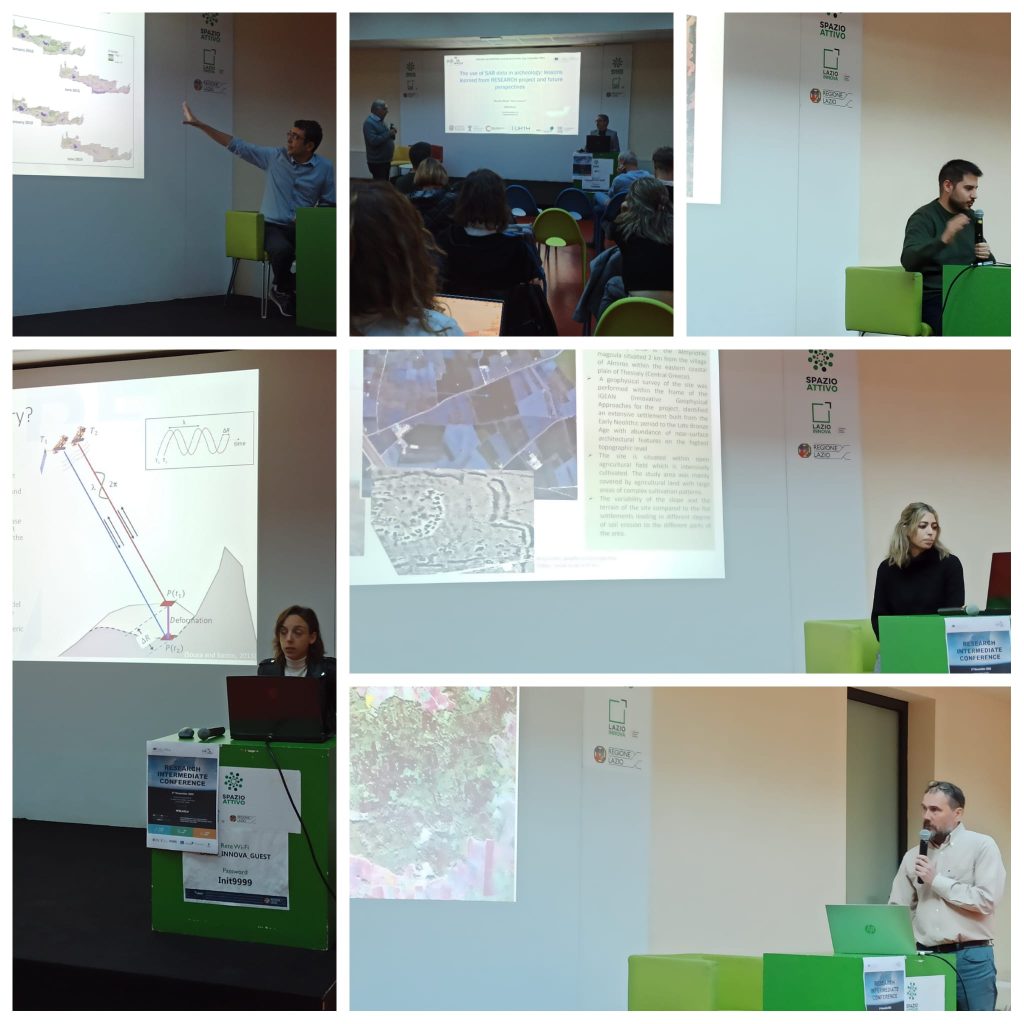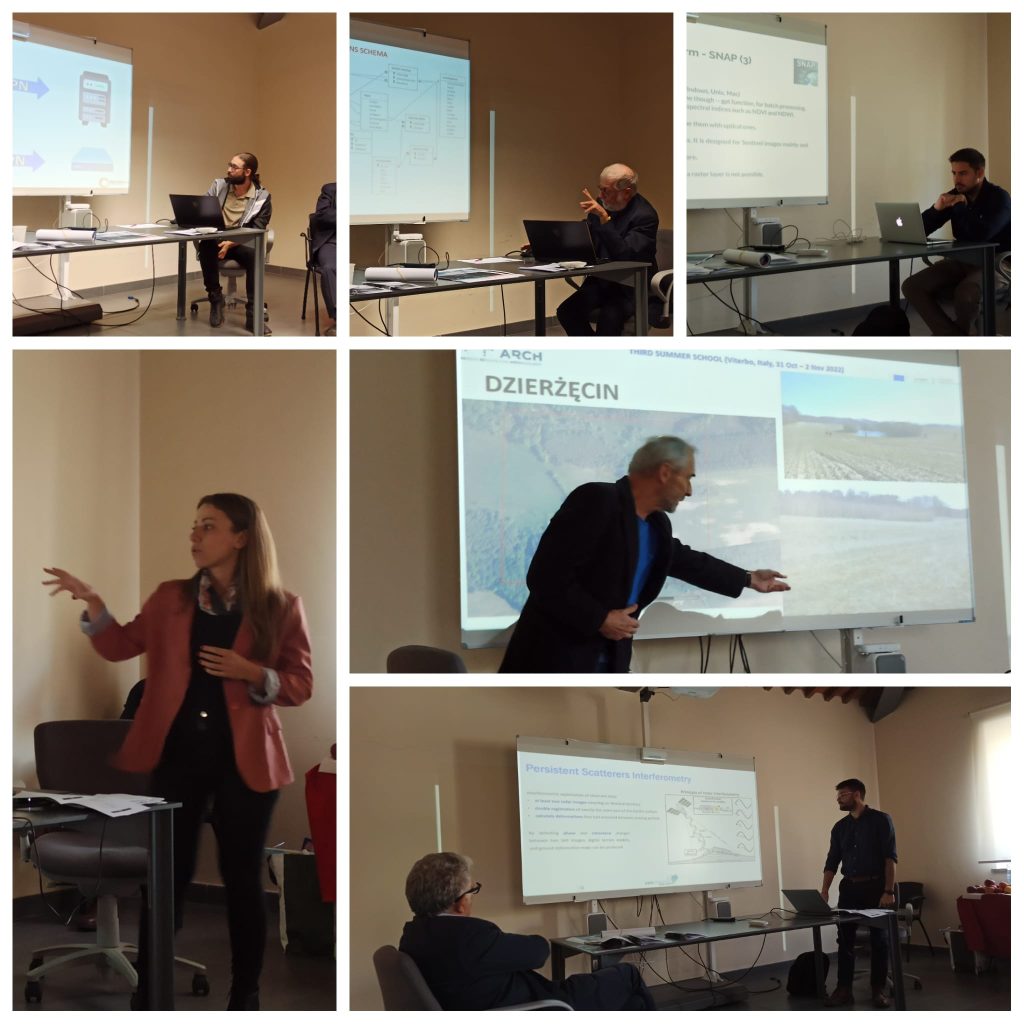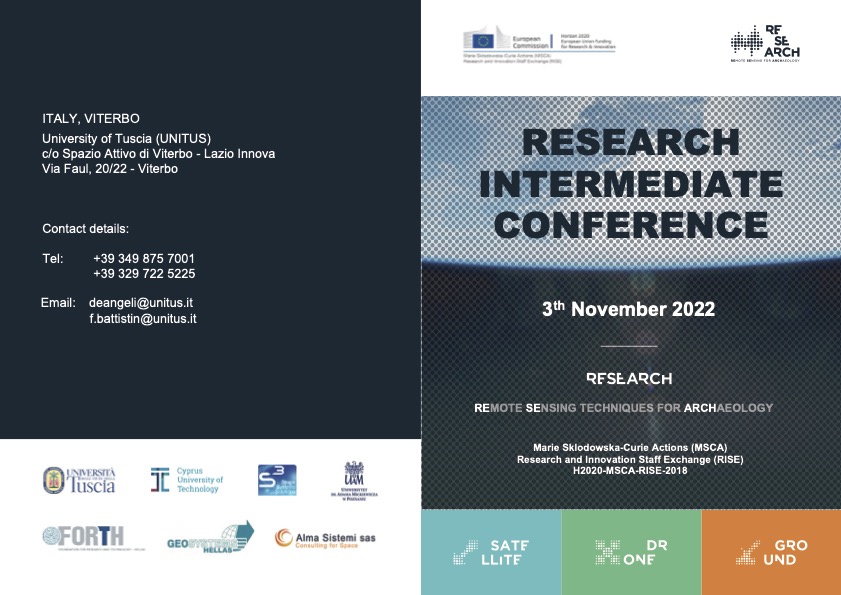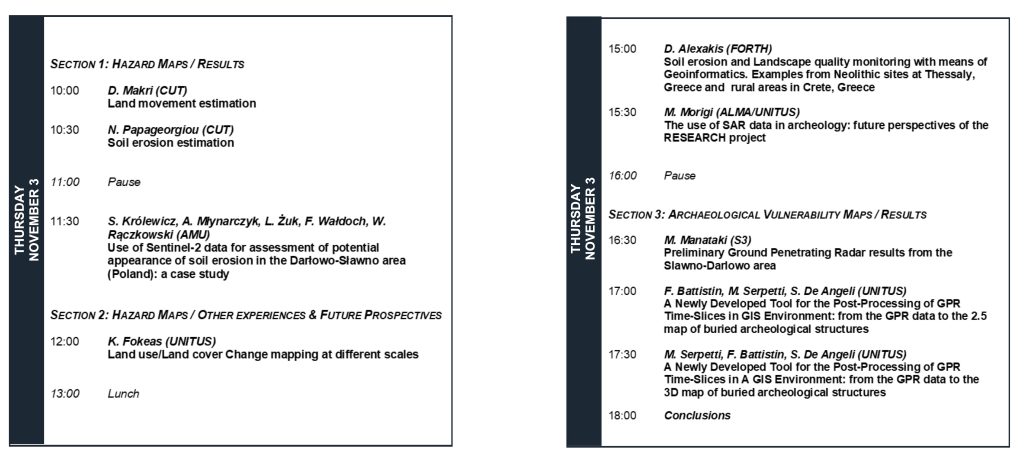Project RESEARCH Final Conference, organized by UNITUS and held in Rome on the 17th of October 2023, is concluded. The Conference was hosted by the Soprintendenza Archeologia, Belle Arti e Paesaggio per la Provincia di Viterbo e per l’Etruria Meridionale, in the beautiful venue of Sala delle Colonne at Palazzo Patrizi-Clementi. The Conference aimed at bringing together the Consortium to illustrate the several activities carried out during this five-year project and the results achieved. The presentations illustrated the risk assessment methodology, the environmental and archaeological data processing chains and related results, and the GIS and WebGIS Platforms developed. The conference ended with a Panel session dedicated to the application of remote sensing technologies to protect material cultural heritage. The invited panelists have been Dott. Daniele Federico Maras (SABAP-VT-EM), Prof. Giovanni Ettore Gigante (Sapienza), and Dott. Ing. Renzo Carlucci (Archeomatica).
Several members of the Soprintendenza participated in the conference, together with external researchers and experts in the field stimulating a dialogue between speakers and public, and possible stakeholders.
The organizers and Project coordinator thank the Soprintendenza for hosting the conference, the panellists, and all the speakers and participants for the interesting presentations and active participation in the discussion of results.
For more details please visit the dedicated page.
